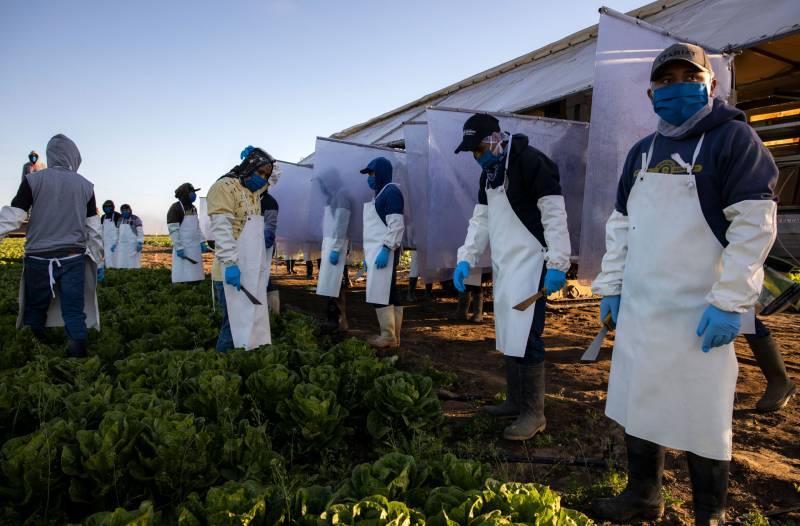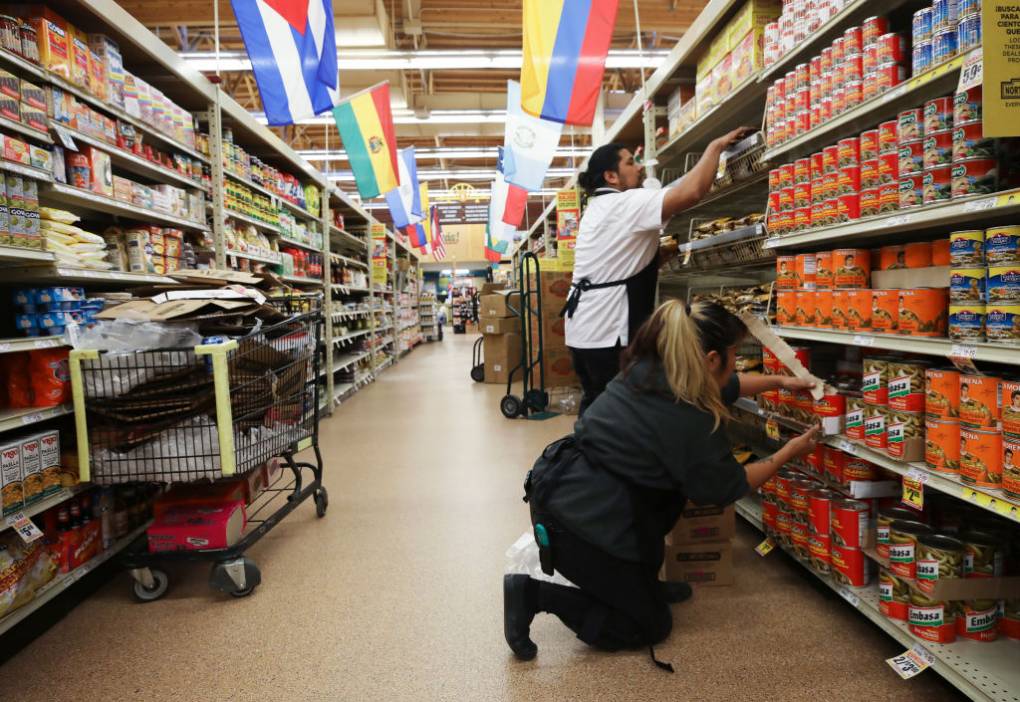Participants who opposed the standard argued it creates an unrealistic and infeasible burden on California employers. Some said certain elements of the standard go beyond the agency’s authority.
“We have outstanding concerns,” Robert Moutrie of the California Chamber of Commerce told the board in reference to one section of the standard that describes how employers must send workers with COVID-19 home, while continuing to pay them.
“We do not believe that such wage issues and paid time off issues, frankly, fall under Cal/OSHA’s jurisdiction,” Moutrie said.
A draft text of the rules presented to the board spanned 21 pages, and included mandates that employers provide workers with information about COVID-19 benefits they may be entitled to.
After listening to the public comments that started at 10 a.m. and didn’t conclude until after dark, Board Chair David Thomas told fellow board members that delaying a decision on the rules wouldn’t help.
“I don’t want to have this on my conscience that we didn’t do something when we actually had the chance to do it,” Thomas said, pointing to a recent uptick in COVID-19 fatalities.
“We’re seeing the worst of this right now. It’s not going to get anything but worse. We’ve got to lead at some point," he said. "Nobody else is doing it... We know what we need to do.”
'Simply Not Economically Viable'
Since the pandemic began, Cal/OSHA has issued guidance on how employers can protect workers from COVID-19 in different industries. But some say the agency has been weak on enforcement.
Maggie Robbins, occupational and environmental health specialist for Worksafe, the labor group that submitted a petition to Cal/OSHA in May calling for the emergency rules, said specific rules would make it easier for the agency to enforce protections.
“It’s much easier for a policeman to say 'You exceeded 30 miles an hour, see that sign that says the speed limit is 30 miles an hour?' It’s a little harder if what the sign says is ‘Go as fast as is safe for this roadway,” Robbins said.
“It makes it clearer what the expectations on the employer are,” Robbins said. “And it will therefore make it easier for them to make citations and take less time for them to do that. The other thing is, by having those standards, it does set up more of an expectation on employers, that, ‘Oh, maybe I really need to pay attention to this more than I might have been otherwise because I was distracted by the other realities of keeping my business open during a pandemic.'”
But many employers argue they are already following the guidelines while struggling to adjust to a constantly evolving health crisis.
“It’s clear many on the labor side have complaints about non-compliant, unsafe workplaces," said Guadalupe Sandoval of the California Farm Labor Contractors Association. "It is also clear the proposed emergency regulation is being rushed through despite several provisions of questionable legality and enforceability. This includes compensation issues for paid sick leave in the proposed rule which are clearly outside the purview of Cal/OSHA. Cal/OSHA should simply enforce the applicable workplace safety regulations, primarily Section 3203, Injury & Illness Prevention Program requirements.”
In response to the many comments delivered to the board on Thursday, Sandoval said, “[Cal/OSHA] should start with the workplaces that employ the individuals who were complaining today. There seems to be plenty there to keep Cal OSHA’s inspectors busy for quite a while.”
The emergency standard also includes requirements for employer-provided housing and transportation, which would impact farmers and other agricultural employers who bring foreign guest workers to California through the H-2A visa program.
Matt Rogers, general manager and co-founder of AgSocio, a farm labor contracting business in the Salinas Valley, said at the meeting that those requirements would threaten his company’s ability to survive and would not meaningfully improve worker protection.
“The reality is many of us in agriculture utilize 15-passenger vans,” Rogers said, citing one example. “But the way that the standard is written, 'three feet between all passengers,' you’re talking about a van with a driver and three people in it... which is simply not economically viable.”


